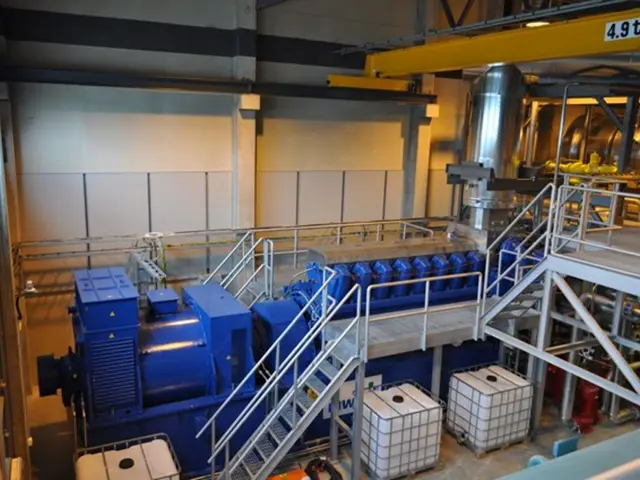More Cars on the Road in Saxony-Anhalt!
Rise in Registered Vehicles in Saxony-Anhalt County - Rise in Registered Vehicles in Saxony-Anhalt
Residents of Saxony-Anhalt are driving more than ever before! Kickstarting 2025, there were 564 vehicles per 1,000 people - a slight increase of three vehicles compared to the previous year, as reported by the State Statistical Office. This has brought the total number of passenger cars in the state to over 1.2 million. Although Saxony-Anhalt still falls below the national average of 583 cars per 1,000 individuals, the trend is clear: more vehicles are hitting the road.
Let's dive into the details. The Saalekreis district boasted the highest density of passenger cars, with 633 cars per 1,000 inhabitants. On the other end of the spectrum, Halle stood out for having the lowest number, with just 392 passenger cars. Interestingly, Halle and Dessau-Roßlau were the only districts registering a slight decrease in the number of cars, with a drop of approximately one car compared to the previous year.
The Automotive land of Europe
Germany continues to lead European countries in passenger car production and sales, producing over 32% of all passenger cars and accounting for nearly 22% of new registrations in Europe in 2024. With approximately 4.1 million passenger cars manufactured and 2.8 million new cars registered in Germany during the same period, the automotive industry plays a significant role in the nation's economy.
But your query about Saxony-Anhalt's specific passenger car distribution remains enticing. While sources do not offer comprehensive statistics for Saxony-Anhalt or its districts, we can infer trends based on Germany's broader automotive context and local indicators.
Economic Pulse of Saxony-Anhalt
The economic health of a region may impact car ownership rates. For instance, recent data on truck driver salaries show that Saxony-Anhalt is among the economically weaker regions in the country. The average salary expectation for professional drivers in Saxony-Anhalt stood at €3,062, significantly lower than the national average of €3,357, and even lower than the earnings in neighboring Saxony, which stood at €3,500.
Though this doesn't directly correlate with passenger car ownership, a lower economic status might suggest a delay in car purchases or fewer registrations compared to regions with higher earning potential. However, more research and specific statistics would be necessary to confirm such assumptions.
In summary, the growth in the number of registered cars in Saxony-Anhalt appears promising, but the exact distribution within the state remains undetermined. To gain a deeper understanding of passenger car ownership trends and distribution, more precise statistics from official state or federal automobile associations would be essential.
Enrichment Data:
Regional and National Car Trends
- Germany accounts for over 32% of passenger cars manufactured and nearly 22% of new registrations in Europe.
Suggested Regional Indicators
- Economic indicators, like salaries or income levels, may offer insights into vehicle ownership rates.
- To improve the transportation lifestyle in Saxony-Anhalt, community policy could focus on vocational training programs for the automotive industry, providing residents with valuable skills to contribute to, and potentially benefit from, the region's growth within this sector.
- As Saxony-Anhalt continues to expand its automotive industry, finance could play a pivotal role in providing accessible loans for vocational training, enabling residents to acquire the necessary skills and secure better-paying jobs in this thriving sector.
- To better understand the current distribution of passenger cars in Saxony-Anhalt's districts, local authorities could investigate partnerships with automotive and transportation industries for data-sharing agreements or surveys on the workforce, providing deeper insights into vocational training needs and assisting in future economic development plans.








